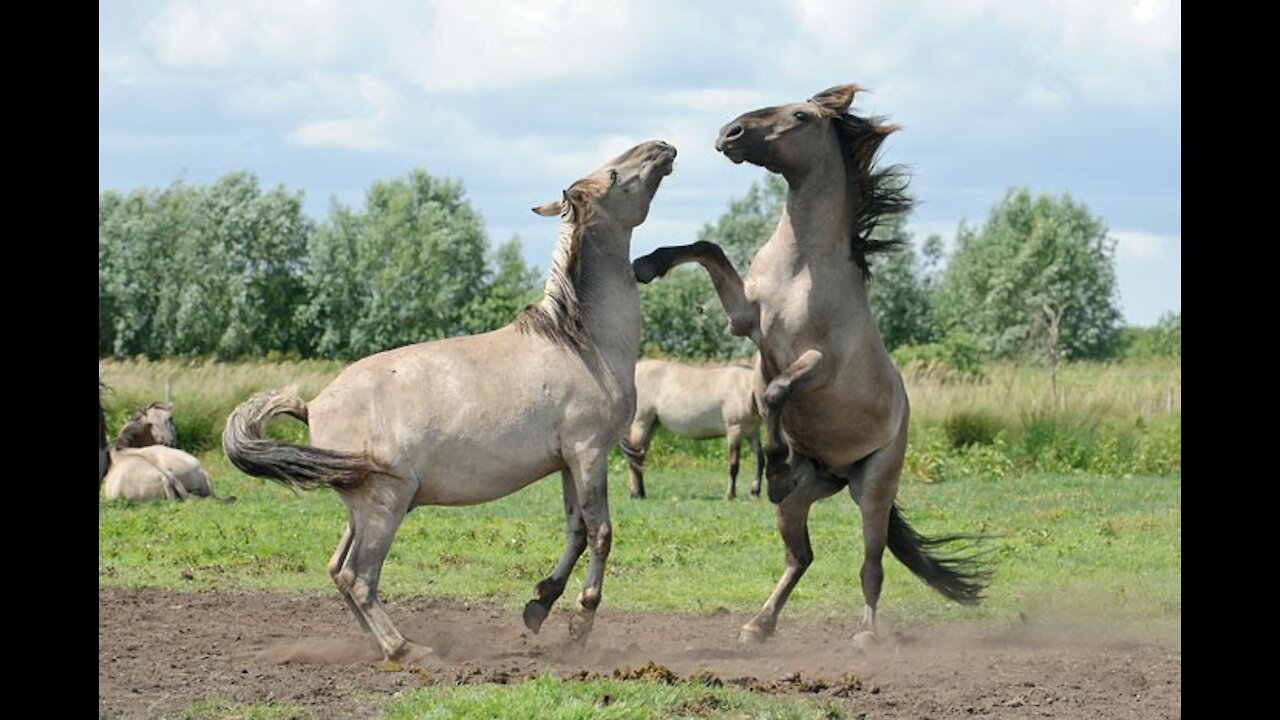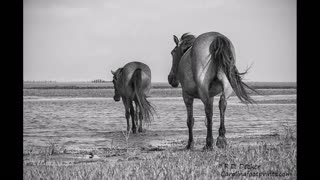Premium Only Content

The Wild horses: Rewild in UK
Missing Species >
Wild Horses
The domestication of horses that started around 3500 BC (Kavar and Dovc, 2008) lead to the decline of feral horse populations and subsequently less numbers in the open plains of The UK and Europe. Horses prefer open grassland environments where their diet would consist of grass, herbs and shrubs. The introduction of a new species of horse for the wild can be done by various methods.
Conservation Plans
The reintroduction of the Dartmoor, Exmoor, Konik, Welsh and Eriskay pony in the UK. Achieved by choosing the right breeds and characteristics of existing horses as some primitive horses have the old European horse genome.
Domesticated horses should not be used before they have lived a semi-feral lifestyle. This allows for the adaptation of local circumstances (Terrain, weather, seasons) to overcome the maladaptation.
Cross Breeding between different populations broadens the genetic diversity (thus fitness for survival). This could ensure the resilience of reintroducing wild horse populations.
At Ham Fen and Stodmarsh In 2002, Wildwood, together with English Nature and Kent Wildlife Trust, imported two herds of Konik horses from Holland to manage the wetlands of Stodmarsh and Ham Fen. This was a move to restore a native species to Kent, where big grazers originally shaped the British countryside. They have been introduced to fenland to manage the area by grazing and trampling.
-
 0:12
0:12
Funny and Cute Animals
4 years agoWild horses #1
391 -
 5:41
5:41
Al Brassell
4 years agoWild Horses - The Rolling Stones
121 -
 3:37
3:37
RDDPhoto
4 years agoWild Horses of the Crystal Coast
30 -
 58:56
58:56
Iggy Azalea
8 hours ago $7.54 earnedtrying to break 1M in gains on MotherLand casino
55.8K16 -
 8:00:00
8:00:00
SpartakusLIVE
13 hours ago#1 WZ Hero SPOONFEEDS premium content STRAIGHT into your CORNEAL TISSUE
94.7K4 -
 1:28:39
1:28:39
FreshandFit
12 hours agoThe Truth About Content Creation Ft. Mr Organik
88.8K9 -
 9:00:08
9:00:08
RalliedLIVE
17 hours ago $2.83 earnedSHOTTY BOYS VS RANKED
86.6K5 -
 3:23:16
3:23:16
Barry Cunningham
13 hours agoPRESIDENT TRUMP CELEBRATE FALLEN POLICE OFFICERS AND HOSTS EVENT AT THE KENNEDY CENTER!
94.3K92 -
 3:44:49
3:44:49
VapinGamers
10 hours ago $0.64 earnedDeathbound - Game Review and Playthru - !game #sponsored
26.9K2 -
 5:06:23
5:06:23
HELMETFIRE
10 hours ago🟢 OFF THE GRID! 🟢 RUMBLE TAKEOVER! 🟢
27.8K